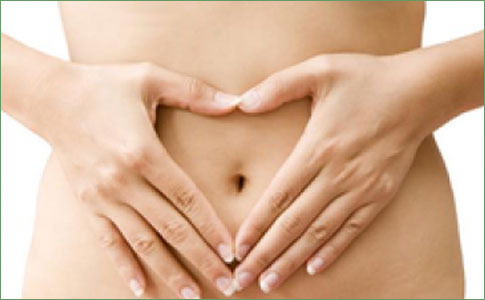Health Centers > Clinical Obstetrics and Gynecology > Urinary Incontinence
Urinary Incontinence
Introduction
Urinary incontinence affects well over 13 million adult women in the United States. It is estimated to affect 30-40% of American women during their lifetime. Despite its prevalence and estimated costs in excess of $19.5 billion annually, up to 70% of women do not seek help for incontinence, primarily because of social embarrassment or because they are unaware that help is available. Because of increasing awareness by both patients and physicians, the societal concept that incontinence is part of the "normal" aging process is no longer acceptable. Advances in modern medicine during the last 80 years have increased the life expectancy of women well into the eighth and ninth decades. We are caring for patients longer and better than ever, effectively managing chronic medical problems such as hypertension, cardiovascular disease, and diabetes, enabling women to enjoy longer and more productive lives. This results in a large population of women living up to one-third of their life after menopause, thereby introducing a whole host of medical issues and health concerns. A prime example of this is the problem of urinary incontinence, which has become more prevalent as the population of aging women grows. In this section we focus on the evaluation and treatment of women with urinary incontinence.
Urinary Incontinence
- Urinary Incontinence
- Anatomy
L Introduction
L Neuroanatomy - Urinary Incontinence - Overview
L Definition
L Etiology
L History
L Patient Questionnaires
L Voiding Diary
L Urinalysis
L Physical Examination
L Cotton Swab Test
L Urinary Cough Stress Test
L Neurologic Examination
L Urodynamics
L Cystourethroscopy
L Imaging Tests - Stress Urinary Incontinence
L Introduction
L Treatment - Urge Urinary Incontinence
L Definition
L Etiology
L Diagnosis
L Treatment - Mixed Incontinence
L Introduction
L Treatment - Overflow Incontinence
L Definition
L Etiology
L Diagnosis
L Treatment - Bypass Incontinence
- Diverticulum
- Functional and transient incontinence
- References
The urinary and reproductive tracts are intimately associated during embryologic development. The lower urinary tract can be divided into 3 parts: the bladder, the vesical neck, and the urethra (Fig 45-1). The bladder is a hollow muscular organ lined with transitional epithelium designed for urine storage. The bladder musculature consists of 3 layers of smooth muscle, which are densely intertwined and constitute the detrusor muscle. The bladder stays relaxed to facilitate urine storage and contracts periodically to completely evacuate its contents when appropriate and acceptable. At the bladder base is the trigone, which is embryologically distinct from the bladder.
The 2 ureteral orifices and the internal urethral meatus form the boundaries of the trigone. The trigone has 2 distinct muscular layers: superficial and deep. The deep layer shares a similar cholinergic autonomic innervation as the detrusor muscle, whereas the superficial layer is densely innervated by noradrenergic nerves. This distinct difference in receptor distribution is important, as it provides opportunities to target more specific sites for pharmacotherapeutic intervention. The superficial detrusor layer extends muscular fibers that contribute to the distal urethra and posterior to the proximal urethra. The urethral "sphincter" itself is not a well-delineated structure; rather, it is a complex and intricate meshwork of intertwining smooth and striated muscle fibers that functionally responds neurophysiologically to variable degrees of vesicle pressures and facilitates urine storage and voiding.
The female urethra is approximately 3-4 cm long. The composition and support of the urethra and bladder neck play key roles in the function and maintenance of urinary continence. Together the striated urethral and periurethral muscles compose the extrinsic urethral sphincter mechanism. The urethral sphincter, along with the levator ani, function in the reflex contraction. The urethra is surrounded by dense vasculature that contributes to the urethral mucosal seal and urethral closure pressure. An abundance of submucosal glands are found along the dorsal surface. Most of the urethral diverticula arise from this area. The uroepithelium is stratified squamous (Fig 45-2).
Stress Urinary Incontinence
The International Continence Society (ICS) defines SUI as the complaint of involuntary leakage on effort or exertion, or on coughing or sneezing ...
Figure 45-1. Interrelationships and approximate location of paraurethral structures. Levator ani muscles are shown as light lines running deep to the pelvic viscera. AT, arcus tendineus fasciae pelvis; BC, bulbocavernosus muscle; CU, compressor urethrae; D, detrusor loop; IC, ischiocavernosus muscle; LA, levator ani muscles; MAT, muscular attachment of the urethral supports; PVL, pubovesical ligament (muscle); US, urethral sphincter; UVS, urethrovaginal sphincter.
Figure 45-2. Urethral anatomy. The submucosal vascular plexus matures after puberty but undergoes great changes after menopause. The amount of smooth and especially striated muscles decreases with age, and the striated components become almost rudimentary.
Neuroanatomy
Neuronal innervation of the lower urinary tract is considered part of the autonomic and somatic nervous systems. The autonomic system (ie, the parasympathetic and sympathetic components) receives visceral sensation and regulates smooth muscle actively during conscious and involuntary lower urinary tract functions. The autonomic nervous system constitutes the bulk of neural control of the lower urinary tract. Sympathetic contributions from T1-L2 and parasympathetic contributions from S2-4 compose the neuronal control system (Fig 45-3). Voluntary control of micturition is controlled by the central nervous system. Cortical control of the detrusor muscle rests in the supramedial portion of the frontal lobes and in the genu of the corpus callosum. Receiving both sensory afferent and modulating motor efferent nerves, the net effect is that the brain provides tonic inhibition of detrusor contraction. Lesions in the frontal lobe chiefly cause loss of voluntary control of micturition and thus loss of suppression of the detrusor reflex, resulting in uncontrolled voiding or urge urinary incontinence. The pons and mesencephalic reticular formation in the brainstem constitute the micturition center. A reflex activation in the central brainstem and peripheral spinal cord mediate a coordinated series of events, consisting of relaxation of the striated urethral musculature and detrusor contraction that result in opening of the bladder neck and urethra. Lesions that interrupt these pathways have various effects depending on the level of interruption, essentially resulting in dyscoordination or dyssynergia of detrusor function.
Figure 45-3. Schematic neuroanatomy of the lower urinary tract, with major sites of drug action.
Urinary incontinence, or loss of bladder control, affects an estimated 25 million people in the United States, according to the National Association for Continence (NAFC). While some people experience temporary incontinence, others live with chronic incontinence.
Who Is Affected by Urinary Incontinence
Urinary incontinence is particularly common among women and older people.
As many as 75 to 80 percent of people who have urinary incontinence are women, according to the NAFC. Research indicates that one in four women over the age of 18 experience at least occasional episodes of urine leakage. "Urinary incontinence can affect both men and women, but it affects women more," says Gousse. "In part, this is because of anatomical differences; women's urethras are shorter while men's are longer. It is easier for urine to escape if there is not a lot of resistance. With a short conduit, it's easier for fluid to escape."
The risk of developing urinary incontinence increases with age, and the NAFC estimates that more than half of residents of nursing homes experience urinary incontinence.
Causes of Urinary Incontinence
As men and women age, their bladders are not able to hold as much urine and the sphincter muscles may weaken, decreasing the body's ability to hold off urinating. In women, the decrease in estrogen after menopause thins the lining of the urethra so that it might not close properly, allowing urine to leak.
Childbearing can also increase the risk of developing urinary incontinence. "In women, the pelvic floor is supported by the vaginal wall," says Gousse. "With age or vaginal delivery, the muscles never come back the way they were before birth, especially after multiple deliveries." However, it is important to note that urinary incontinence is not a normal part of aging or childbearing, and that it's often treatable.
In addition to aging and childbirth, there are many other possible causes of urinary incontinence, including:
- Diabetes, neurological diseases, and nerve injury - "In men and women, urinary incontinence can be caused by neurological disorders such as multiple sclerosis, spinal cord injury, and Parkinson's disease," says Gousse. "Other conditions include anything that affects the nerve pathways of the body, such as a herniated disc that compresses nerves or a stroke."
- Pelvic surgery or prostate surgery
- Enlarged prostate in men
- Pelvic organ prolapsed in women
- Lifestyle factors - Smoking and obesity can both increase the risk of developing incontinence. In some women, urine may leak during high-impact exercise, such as running.


